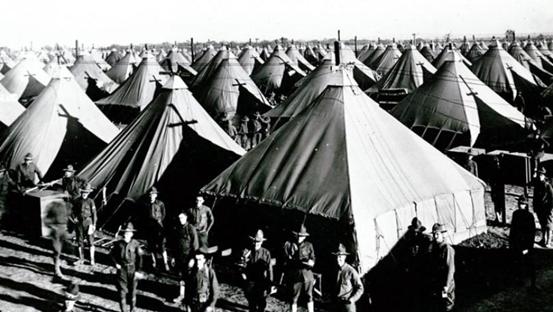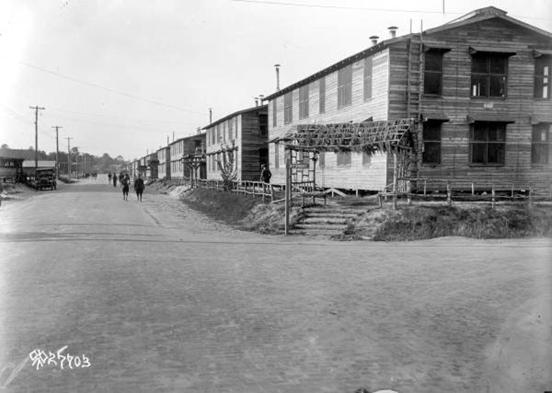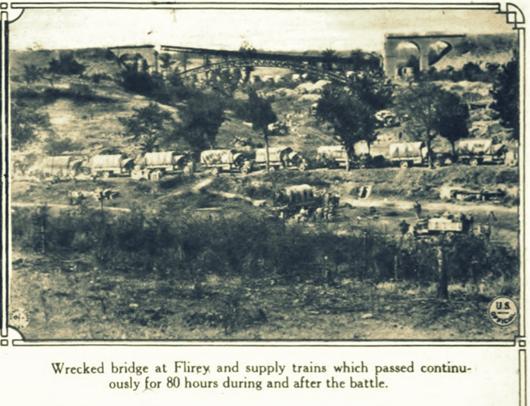Civilians Become Soldiers
First Steps (HUP-two-three-four...)
After declaring war, America built sixteen "cantonments" at which nearly four million draftees would start their Army service. The LIRR took men by the thousands, including Joseph Barry and Walter Wheeler, to the cantonment at Yaphank.
Camp Upton

Train-top view of draftees arriving at Camp Upton;
the LIRR carried 20% of the country's military rail passengers during the war
With a capacity of 18,000, Upton was not the largest new camp, but it may have been the busiest. It did more than process human tsunamis of draftees. When inland regiments came east, bound for France, many stayed at Upton pending assignment to ships - often waiting days for troop ships to arrive in New York Harbor in sufficient number to form convoys.
Between 1917 and 1919, Upton was served by more than 4,000 LIRR trains, which carried 4,400,000 passengers and delivered 500,000 tons of supplies. All those trains, people, and supplies rumbled through Hicksville. The men who operated the town's crossing gates never got a chance to rest.
Some draftees from each train proved unsuitable (e.g., anarchists, the mentally incompetent, and immigrants who refused to profess loyalty to the U.S.) and were sent home. Those who remained were inducted into the Army and got uniforms, bunks, food, and perfunctory training. Most would not remain in Yaphank for their real training - greater New York had too many draftees to fit into any one camp. Instead, they would be scattered around the country to other Army posts.
After enlisting, Charles Wagner found himself in Waco, Texas at Camp MacArthur, where many of its 43,000 soldiers lived in a city of wooden-floored tents.

Tents at Camp MacArthur didn't offer much comfort when winter blizzards swept across Texas.
blogs.baylor.edu/texascollection/category/waco/camp-macarthur/
Just seventeen days after they arrived at Camp Upton, James Barry and Walter Wheeler boarded an outbound troop train, soon watched Hicksville speed past, and were on their way to Jacksonville, Florida and Camp Joseph E. Johnston.

Barracks at Camp Joseph E. Johnston
worldwar1centennial.org/index.php/261-florida.html
In their camps, in addition to normal Army training, soldiers also received further wartime instruction: they were taught basic French. Whether on streets or battlefields, they would need to make themselves understood.
*
Many Kinds of Soldiers

raycityhistory.wordpress.com/tag/st-mihiel-offensive/
There was more to a fighting army than infantry and artillery. It needed men to do a variety of critical jobs, and the Army decided which man would do which job. And so, it happened that soldiers Barry, Wagner, and Wheeler all were allocated to Transport units of the U.S.Q.M.C. (Quartermaster Corps). Let's look at how such men served their country in the war.
***

